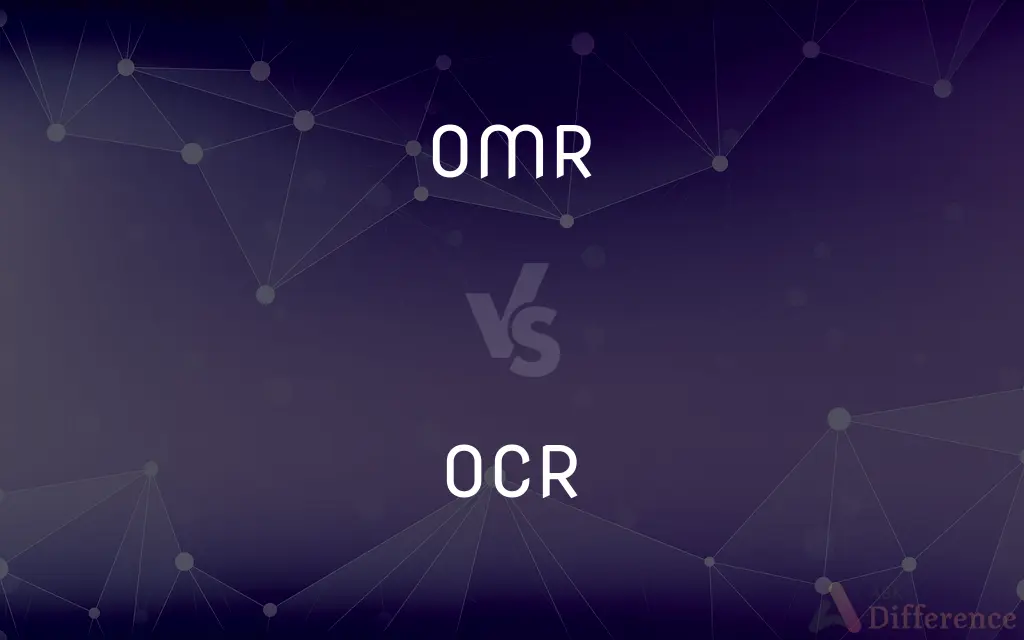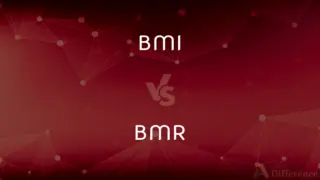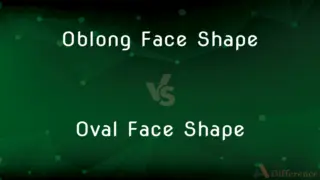OMR vs. OCR — What's the Difference?
Edited by Tayyaba Rehman — By Fiza Rafique — Published on December 19, 2023
OMR (Optical Mark Recognition) detects marked areas on paper, while OCR (Optical Character Recognition) reads printed or handwritten text.

Difference Between OMR and OCR
Table of Contents
ADVERTISEMENT
Key Differences
OMR, or Optical Mark Recognition, refers to the process of capturing human-made marks on a document. These marks are usually made using a pencil or pen on specific areas like checkboxes or fill-in bubbles. On the other hand, OCR, or Optical Character Recognition, is a technology that converts different types of documents, including paper documents, PDF files, or images captured by a digital camera, into editable and searchable data. OCR identifies alphabets, numbers, and symbols, making it useful for reading printed or handwritten text.
OMR is primarily used for applications like surveys, tests, and examinations where the responses are predefined, such as multiple-choice questions. Meanwhile, OCR is employed in scenarios where the content is diverse and not predefined, like scanning a book page or an invoice. Both OMR and OCR technologies require specific software and hardware for the process.
While OMR focuses on recognizing the presence or absence of marks in predetermined positions, OCR goes beyond to recognize the shape and form of characters, regardless of their position on the page. This makes OCR more intricate than OMR because it deals with the nuances of fonts, handwritings, and layout.
In practical applications, OMR might be found in educational institutions for grading multiple-choice exams. At the same time, OCR can be seen in libraries for digitizing books or businesses for digitizing and indexing printed records. Both OMR and OCR, though distinct in function, play a crucial role in digital transformation, easing data collection, storage, and retrieval.
Comparison Chart
Definition
Detects marked areas on paper.
Reads printed or handwritten text.
ADVERTISEMENT
Primary Use
Surveys, tests, and exams.
Digitizing books, invoices, and documents.
Complexity
Less intricate, fixed pattern.
More intricate due to diverse fonts and handwritings.
Data Type
Predefined responses.
Diverse content, not predefined.
Recognition Basis
Presence or absence of marks.
Shape and form of characters.
Compare with Definitions
OMR
A system that reads penciled or penned marks on specific areas.
Using OMR, the institution minimized errors in data collection.
OCR
A system for transforming image-based characters into digital text format.
The library used OCR to make digital versions of ancient books.
OMR
A technology that detects marked areas on paper.
The school used OMR to grade the multiple-choice tests.
OCR
A method to convert text from images or physical papers into editable formats.
Businesses use OCR to digitalize printed invoices for better record-keeping.
OMR
A process for recognizing human-made marks on documents.
OMR systems can quickly tally responses from survey forms.
OCR
A technology that converts printed or handwritten text into machine-encoded text.
OCR software helped digitize old manuscripts into searchable PDFs.
OMR
A tool for digitizing marked data from physical forms.
With OMR, processing hundreds of feedback forms became more efficient.
OCR
A tool that recognizes and reads characters in images or scanned documents.
OCR capabilities in the app allowed users to extract text from photos.
OMR
An automated method for data input from marked paper forms.
The election commission used OMR machines to count votes.
OCR
An automated process for recognizing fonts, symbols, and handwritings in documents.
With OCR, the team was able to extract data from handwritten notes.
Common Curiosities
In what applications is OMR commonly used?
OMR is used in grading exams, surveys, ballots, and other forms with predefined responses.
Is OCR accurate with all types of handwriting?
OCR accuracy can vary based on handwriting quality, but advanced OCR systems have become quite adept at recognizing diverse styles.
Can OMR read handwritten text?
No, OMR detects marks but doesn't read or recognize text. OCR is used for that purpose.
What's the primary benefit of using OMR?
OMR offers quick and automated data collection from marked forms, minimizing manual errors.
How does OMR work?
OMR detects human-made marks, such as those made with a pencil or pen, on predetermined areas of a document.
What are the limitations of OMR?
OMR can only recognize marks in specific areas; it doesn't read or recognize actual text or handwriting.
What does OMR stand for?
OMR stands for Optical Mark Recognition.
What does OCR stand for?
OCR stands for Optical Character Recognition.
Where is OCR technology commonly used?
OCR is used in digitizing books, extracting text from images, and converting printed documents into editable formats.
Can OCR recognize symbols and special characters?
Yes, advanced OCR systems can recognize a wide range of symbols and characters.
How is OCR different from OMR?
While OMR detects marked areas, OCR reads and recognizes printed or handwritten text.
Can OCR work with low-quality images or scans?
The accuracy of OCR diminishes with lower quality inputs, but advanced systems can still perform reasonably well on less-than-perfect scans.
How does OCR handle different fonts?
Modern OCR systems can recognize a vast array of fonts and adapt to variations in printed text.
Between OMR and OCR, which is more complex?
OCR is generally more complex due to the intricacies of recognizing diverse fonts, symbols, and handwritings.
Is special equipment required for OMR?
Yes, OMR typically requires specific scanners and software to read and process the marked forms.
Share Your Discovery

Previous Comparison
BMI vs. BMR
Next Comparison
Oblong Face Shape vs. Oval Face ShapeAuthor Spotlight
Written by
Fiza RafiqueFiza Rafique is a skilled content writer at AskDifference.com, where she meticulously refines and enhances written pieces. Drawing from her vast editorial expertise, Fiza ensures clarity, accuracy, and precision in every article. Passionate about language, she continually seeks to elevate the quality of content for readers worldwide.
Edited by
Tayyaba RehmanTayyaba Rehman is a distinguished writer, currently serving as a primary contributor to askdifference.com. As a researcher in semantics and etymology, Tayyaba's passion for the complexity of languages and their distinctions has found a perfect home on the platform. Tayyaba delves into the intricacies of language, distinguishing between commonly confused words and phrases, thereby providing clarity for readers worldwide.
















































